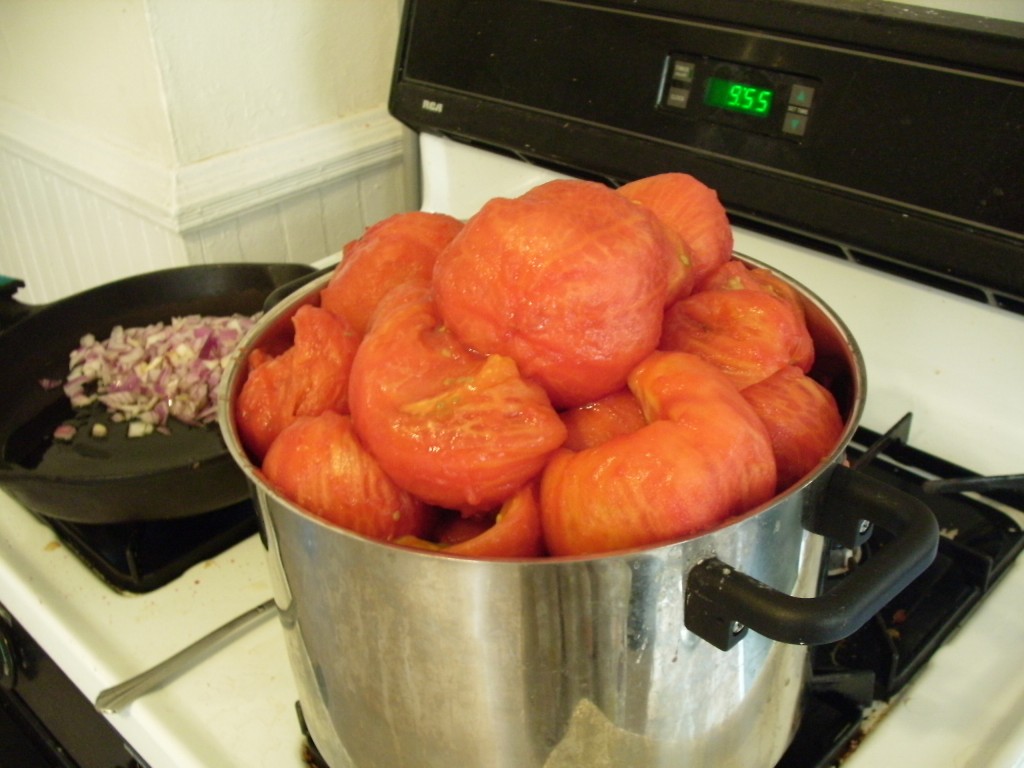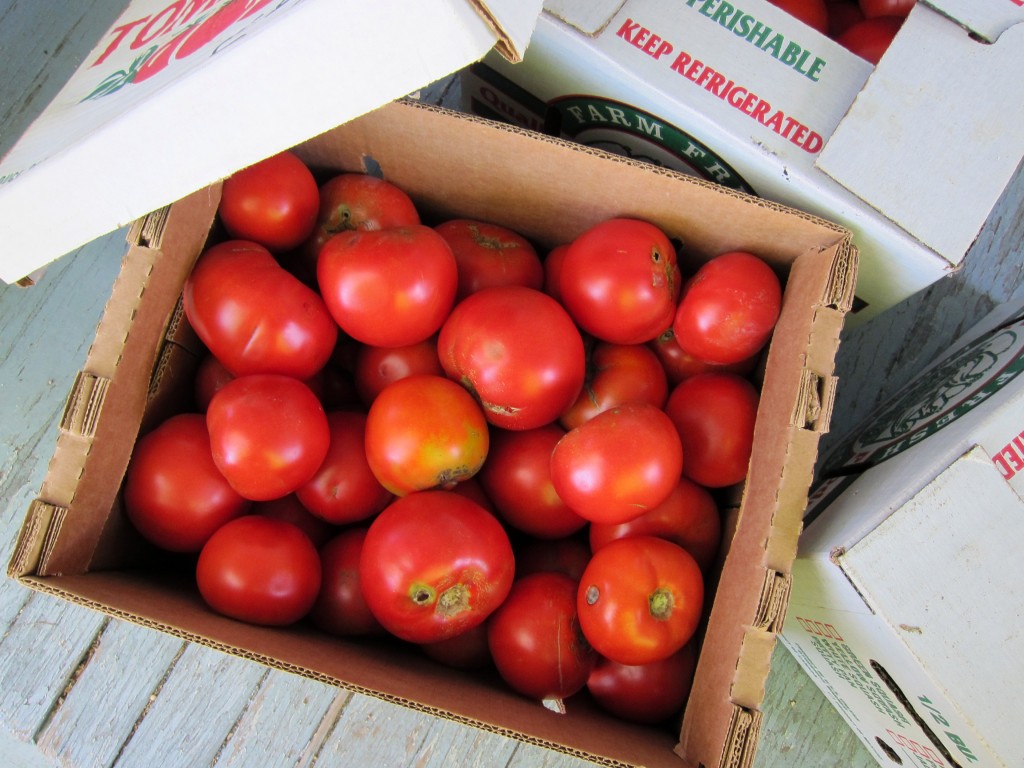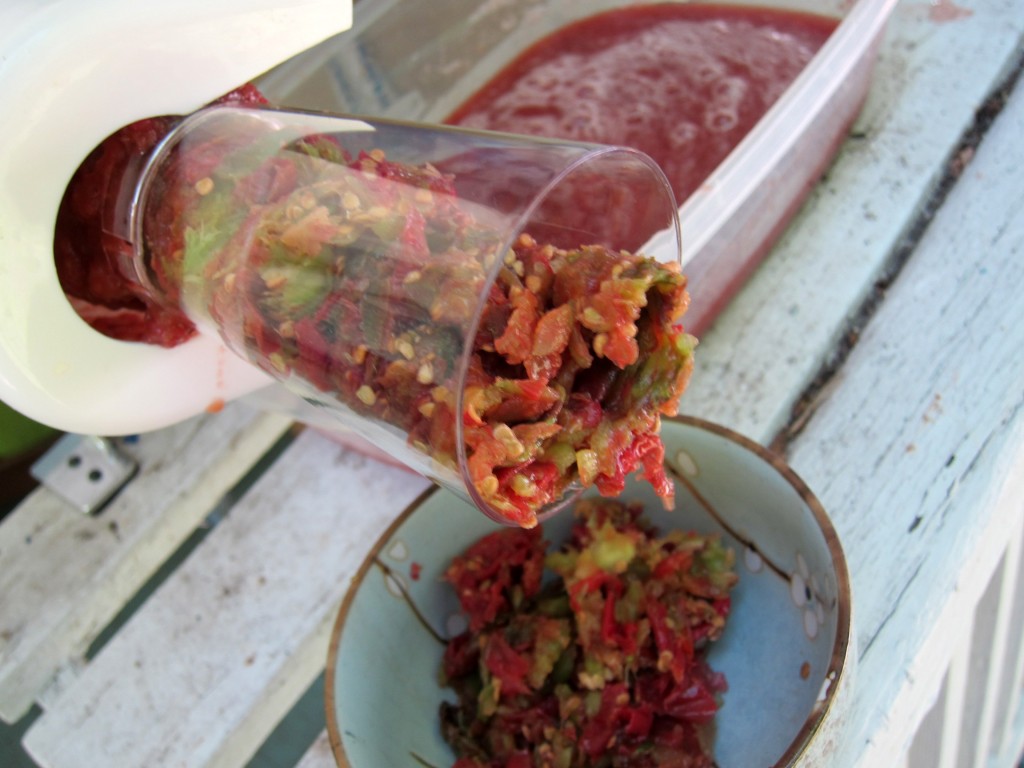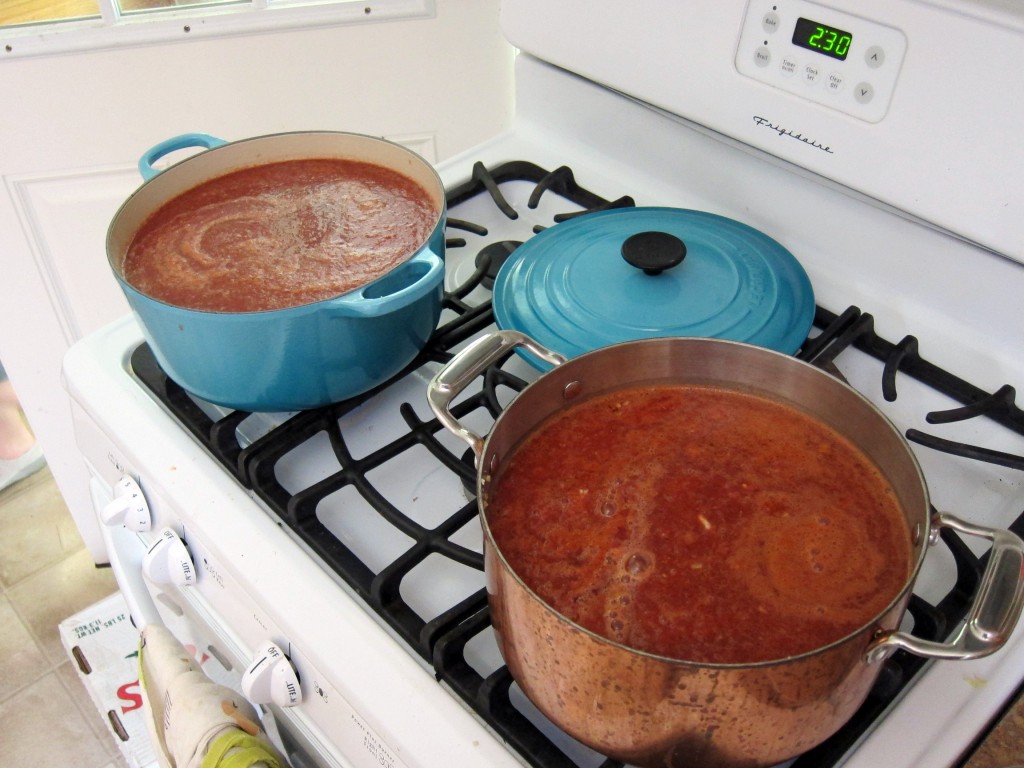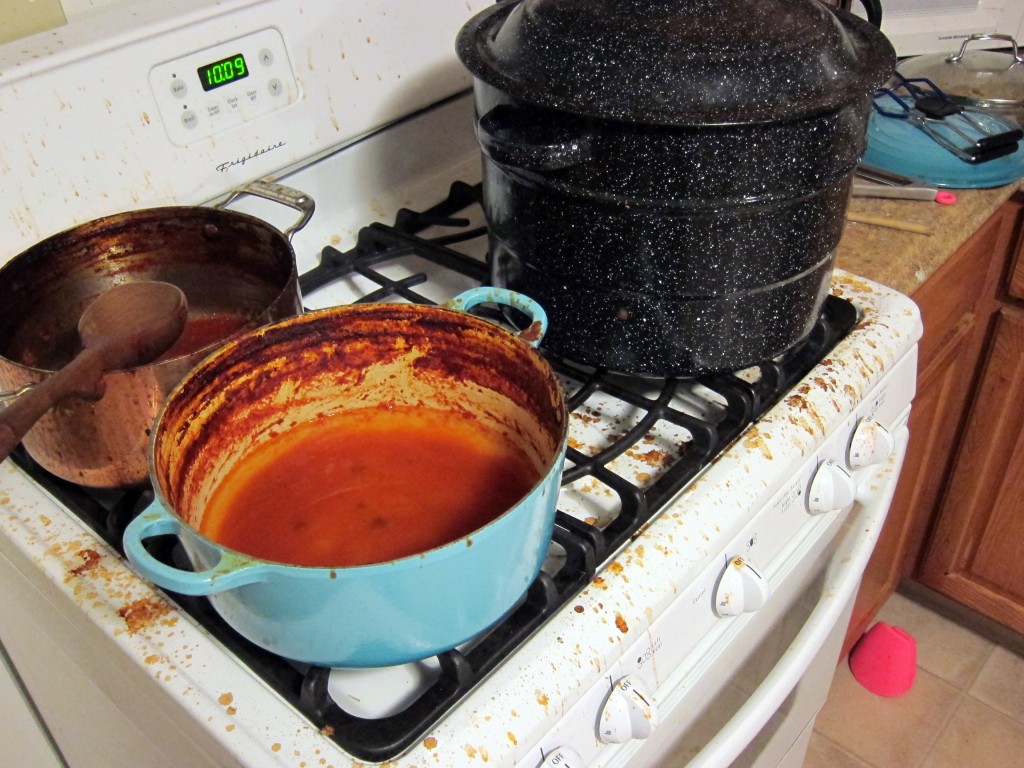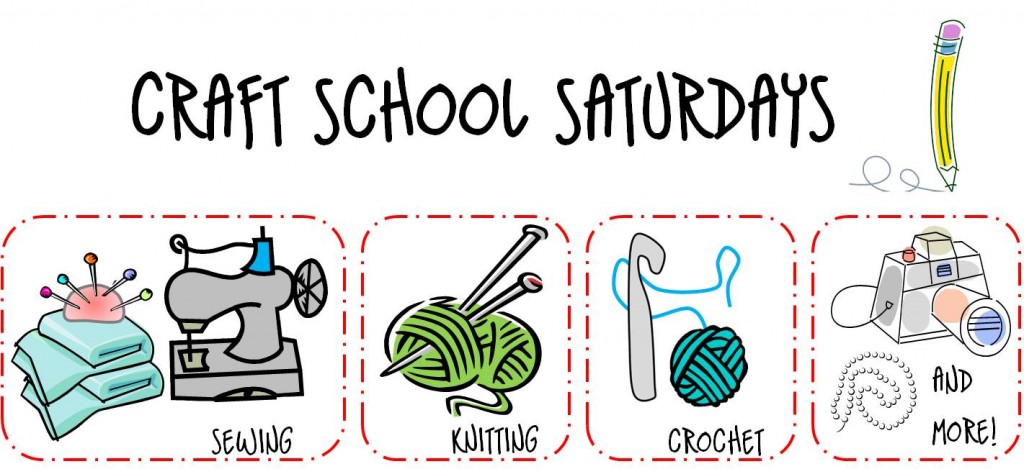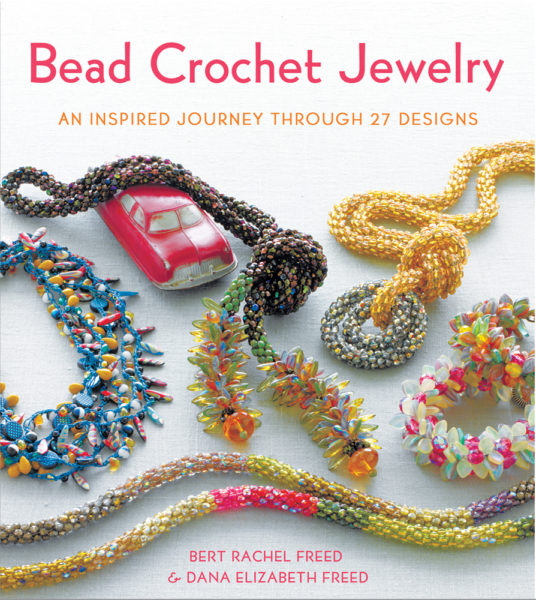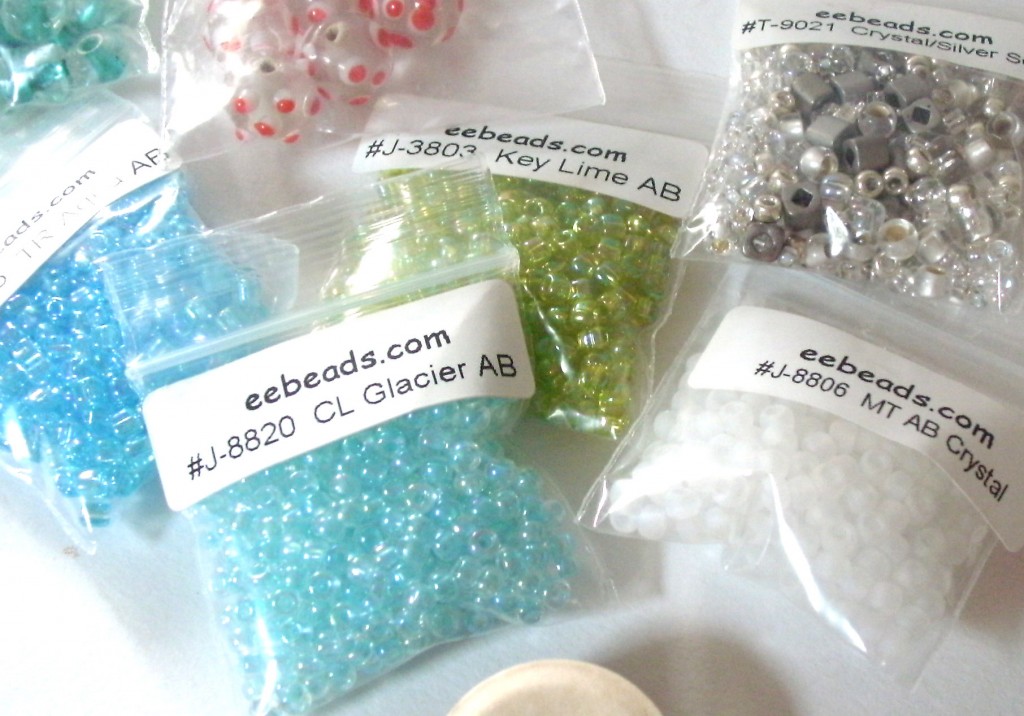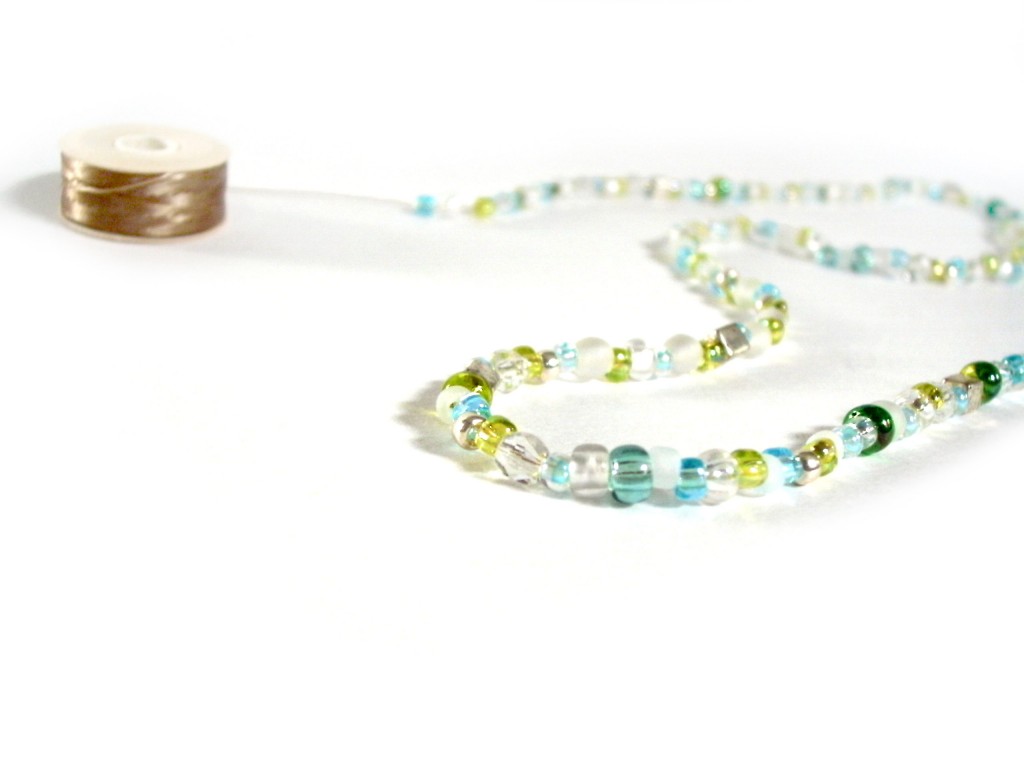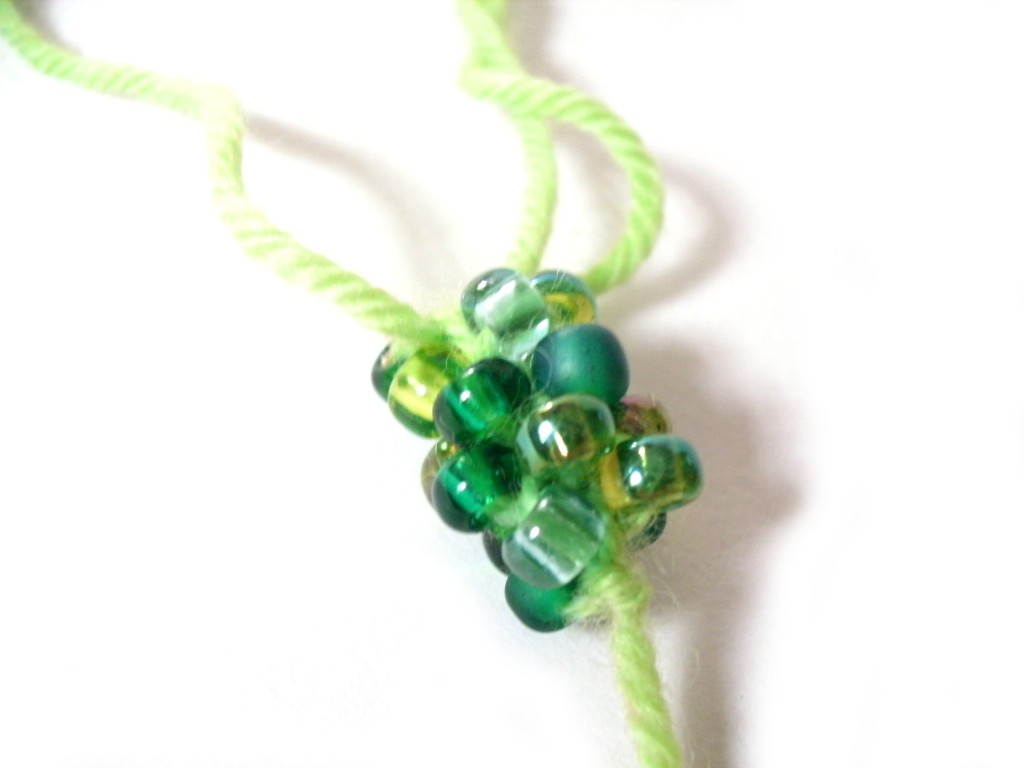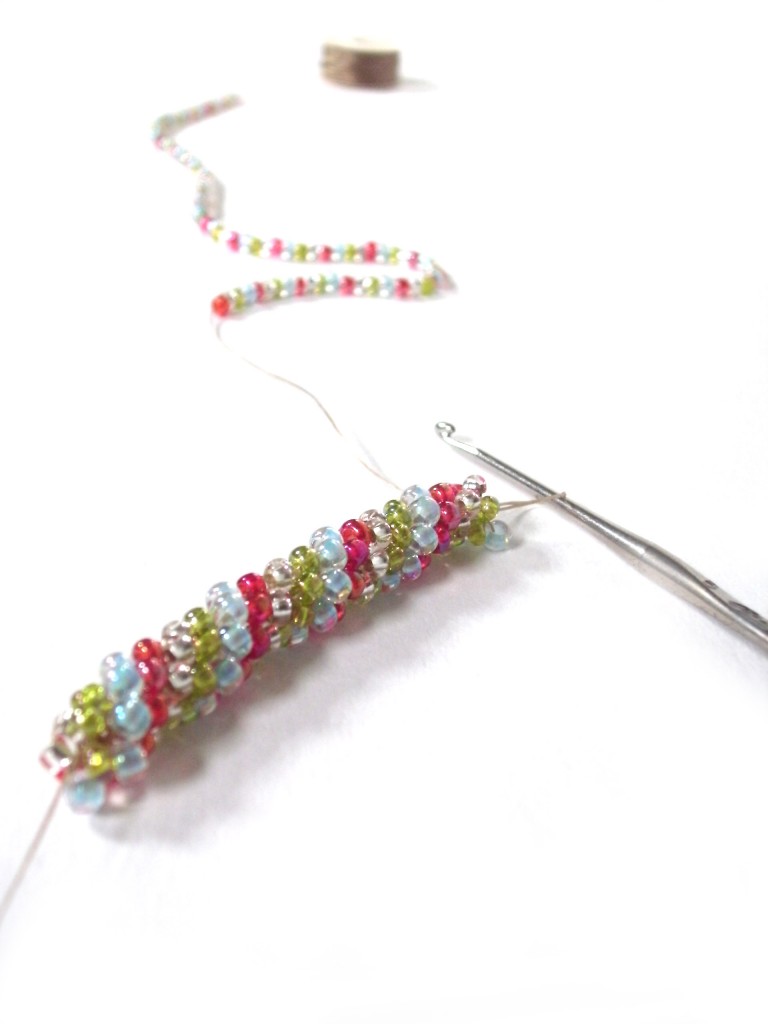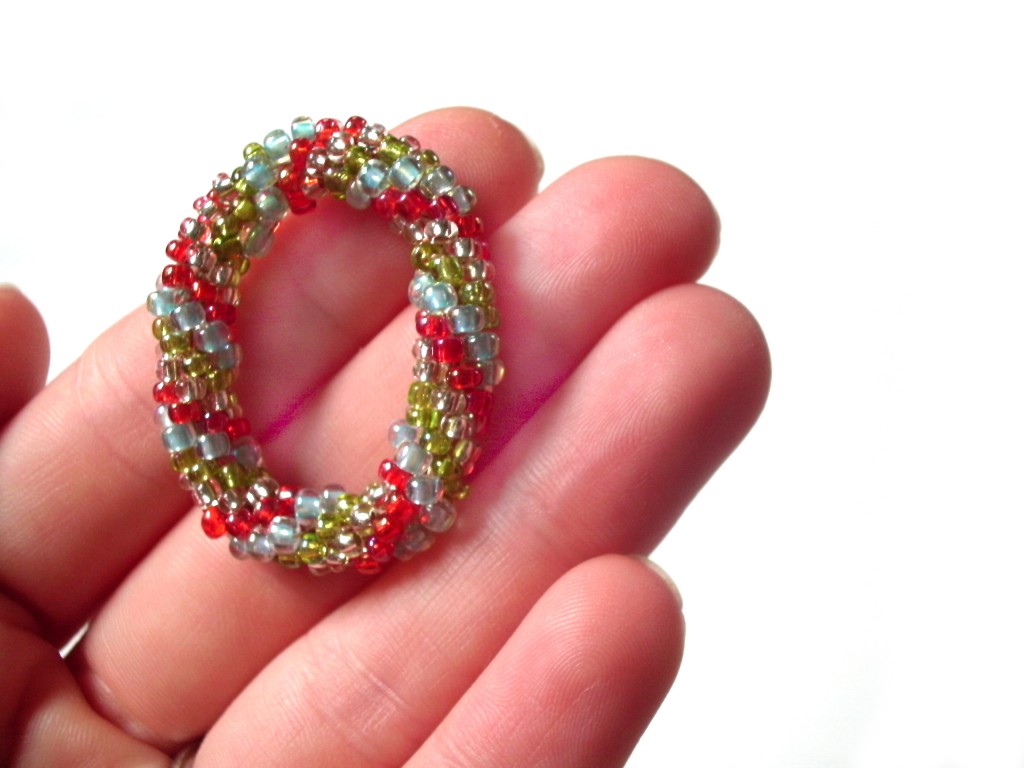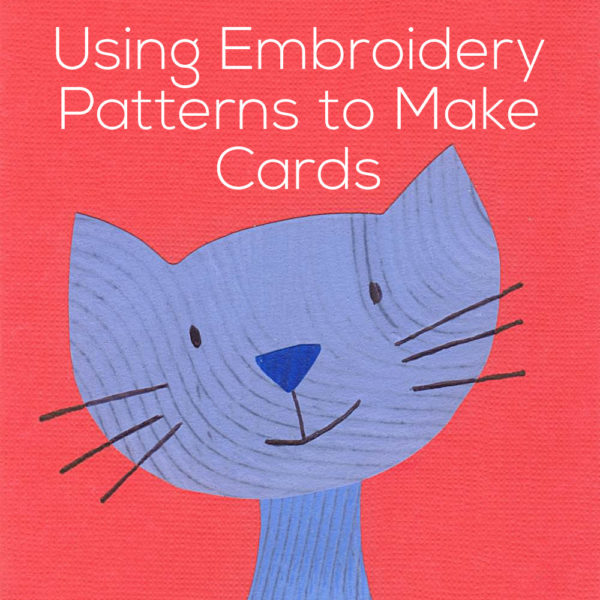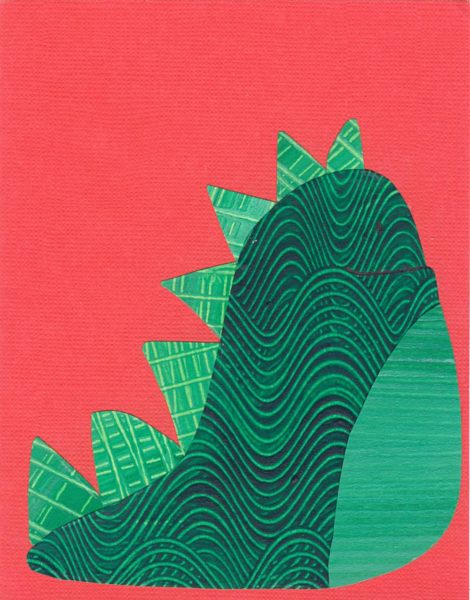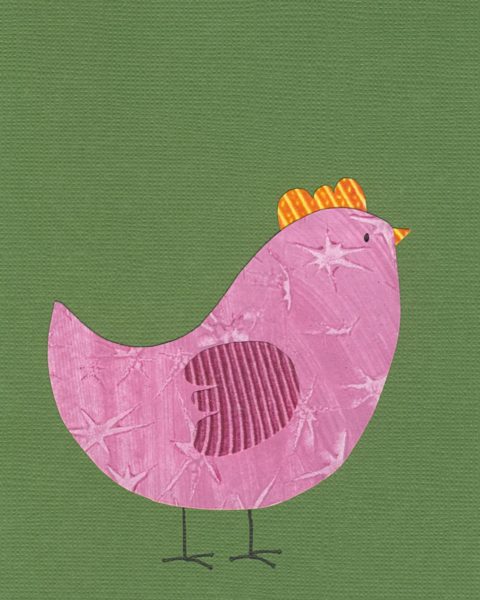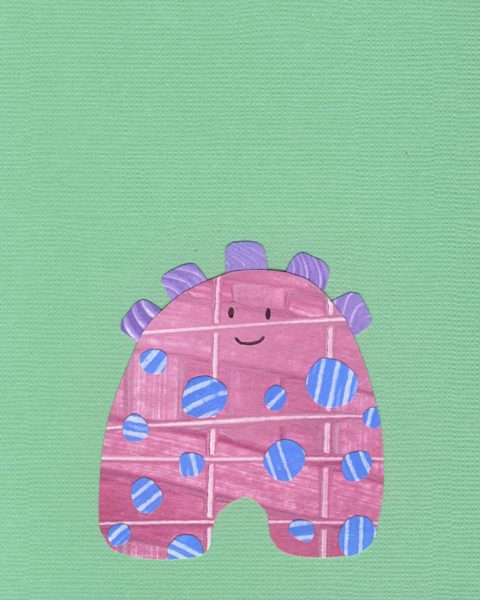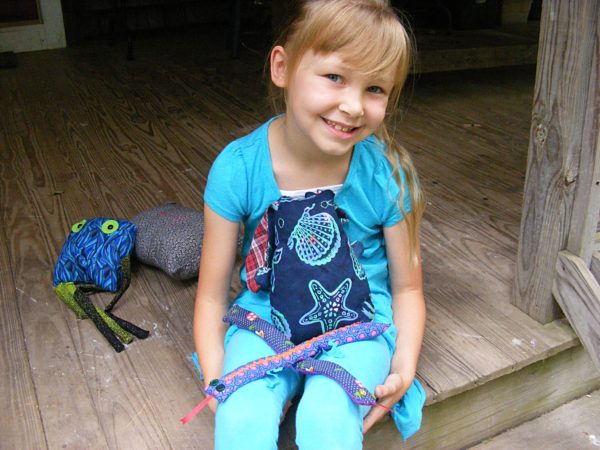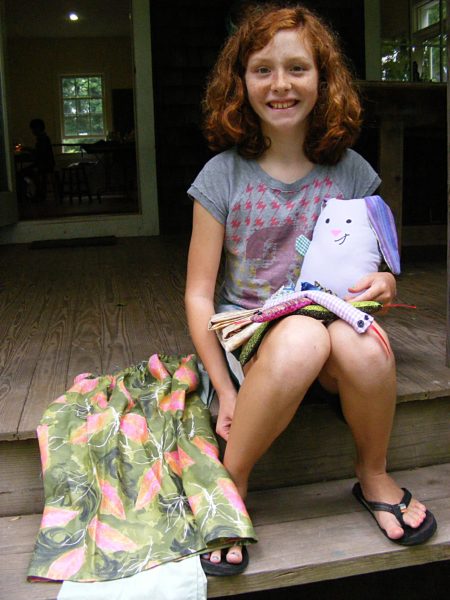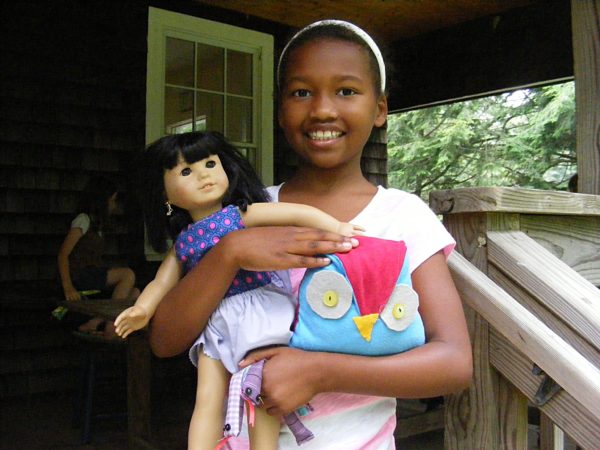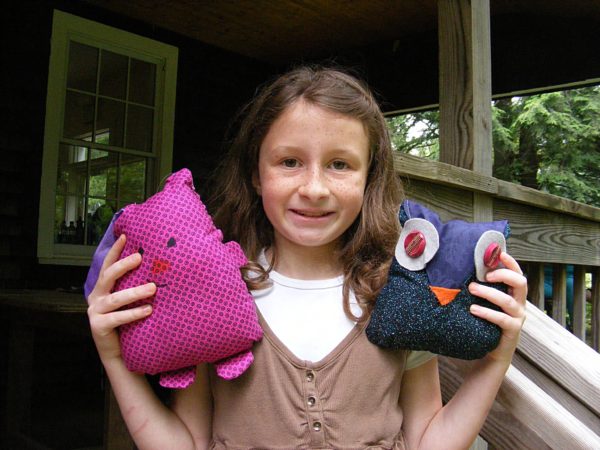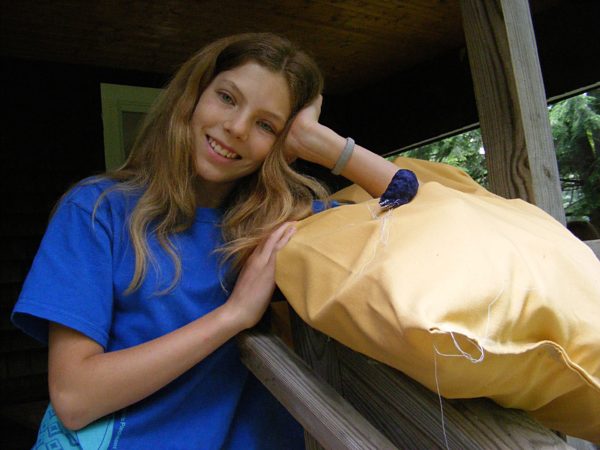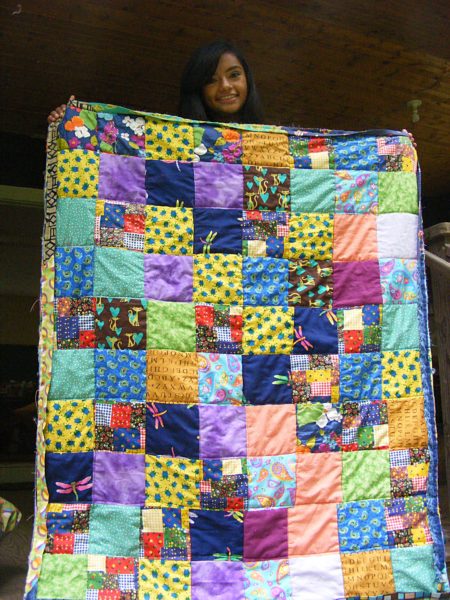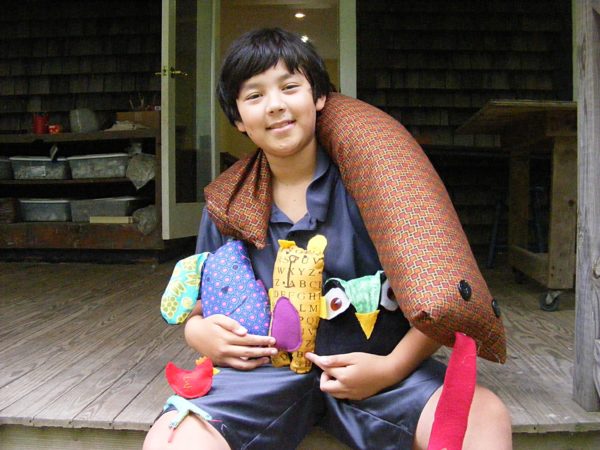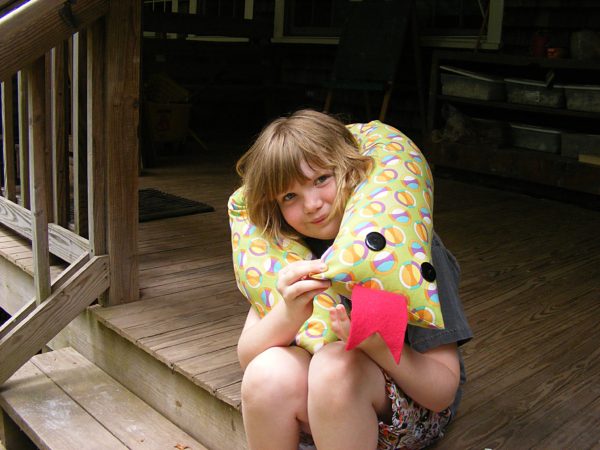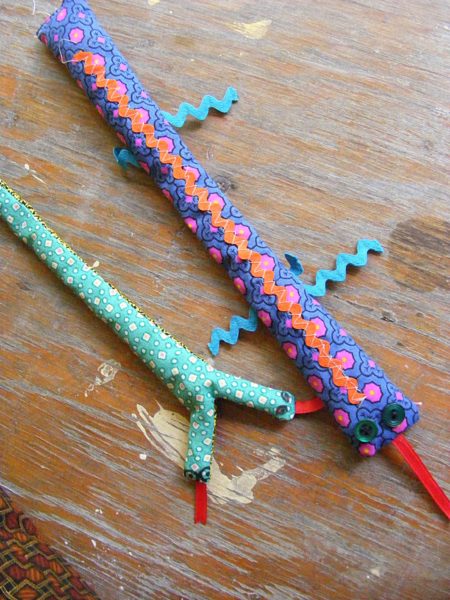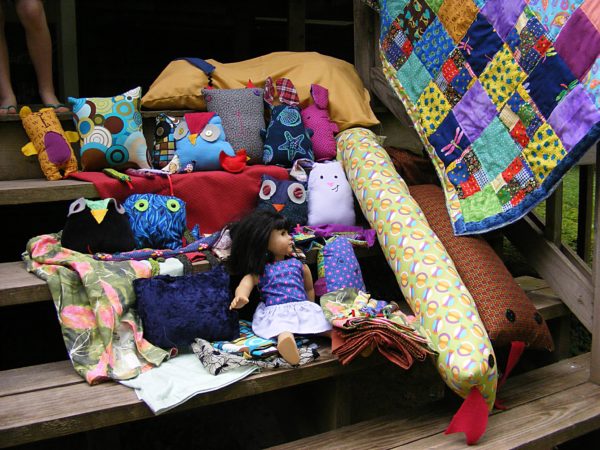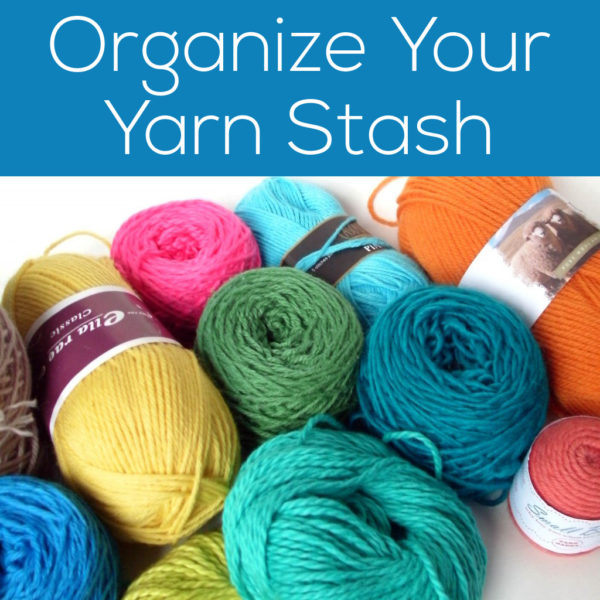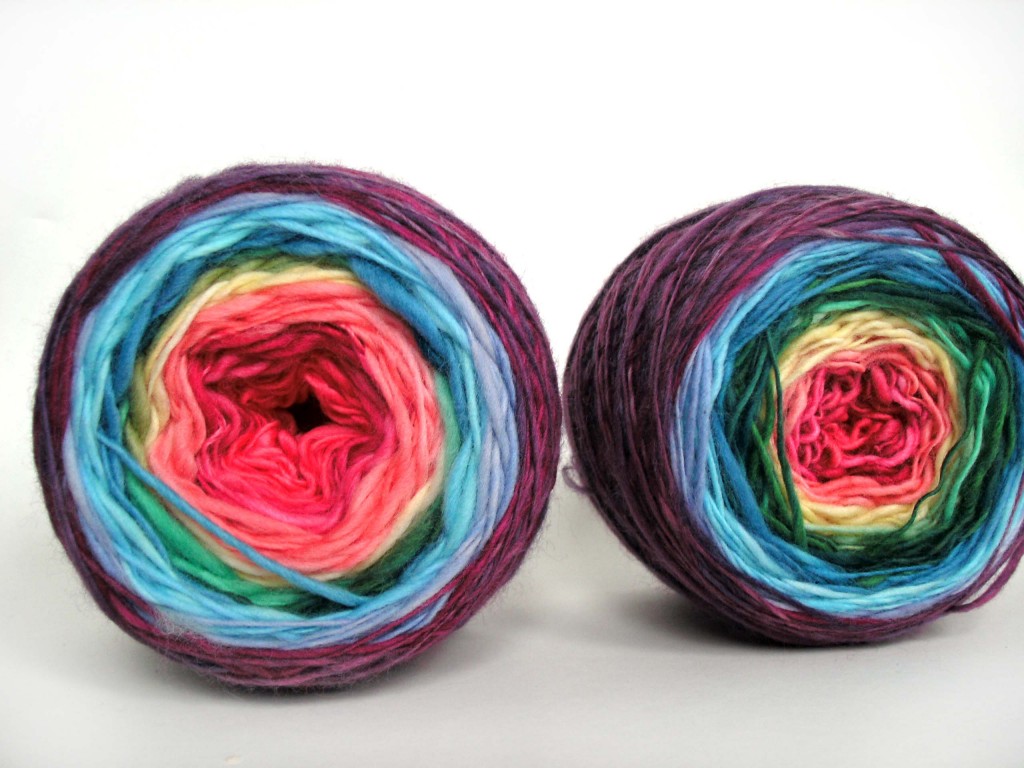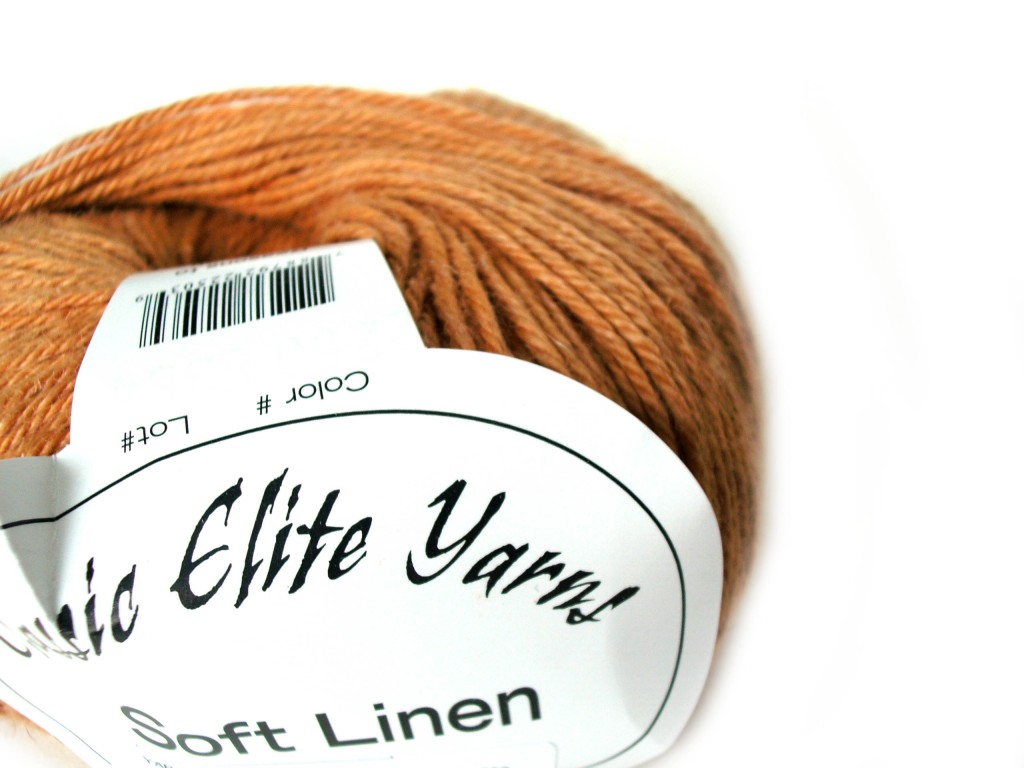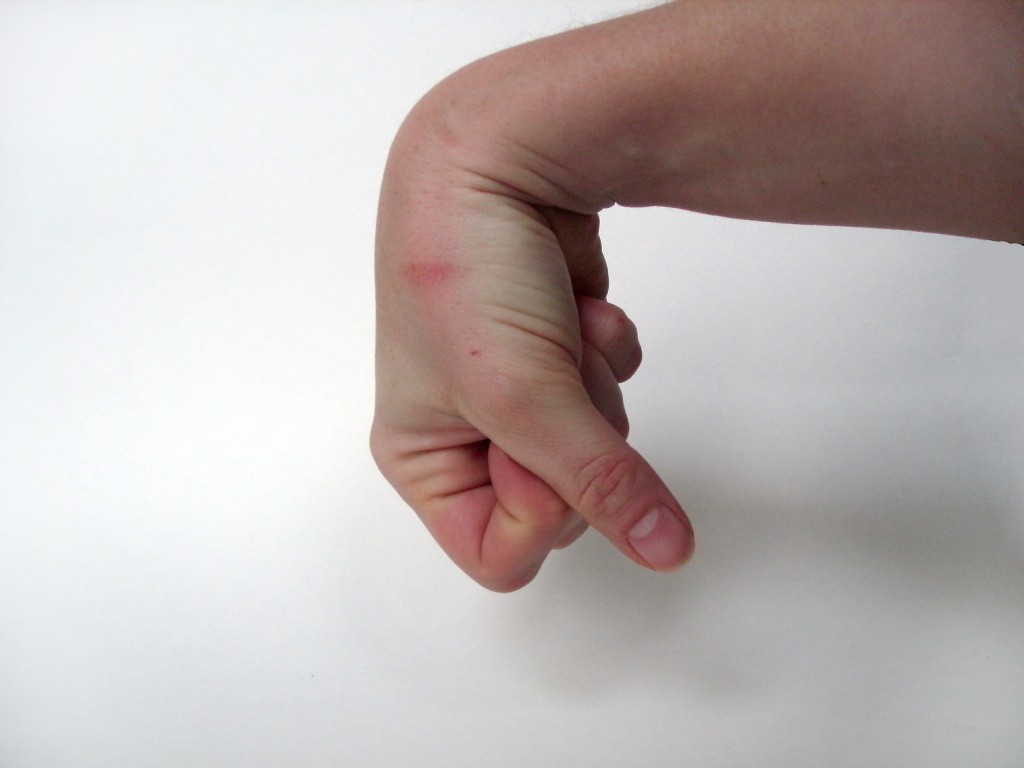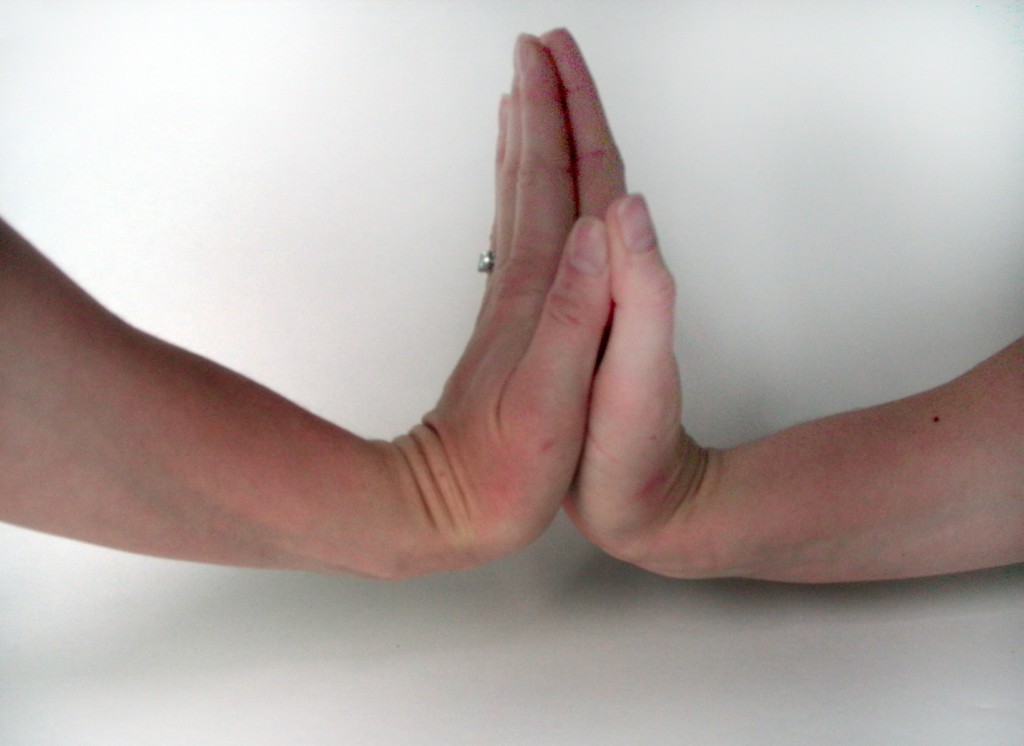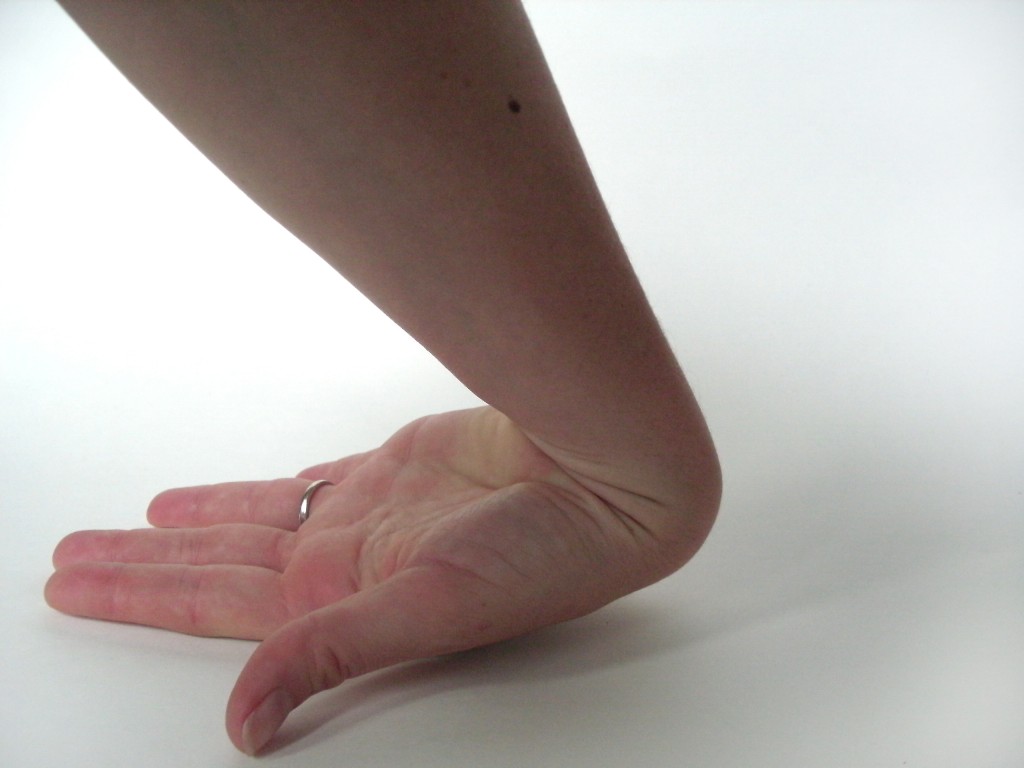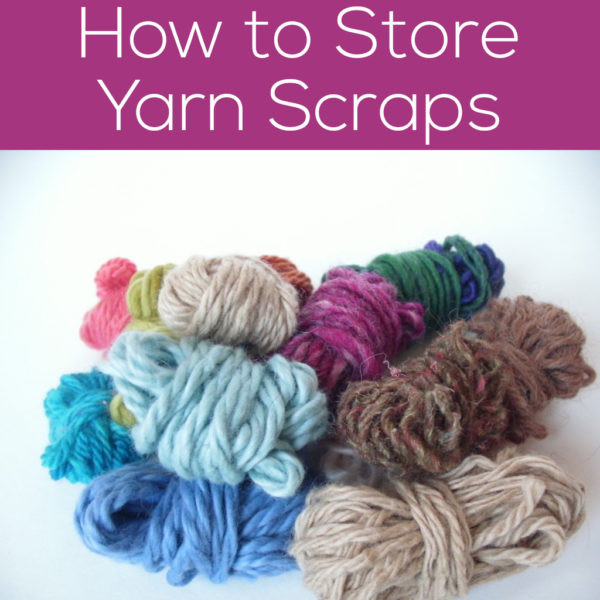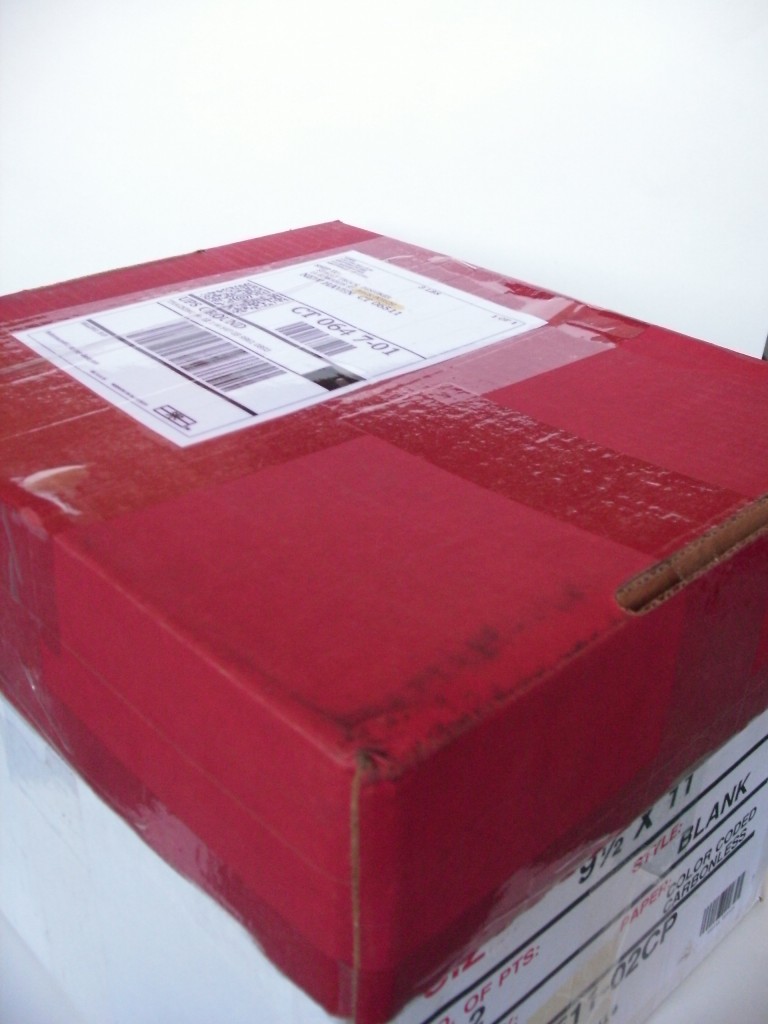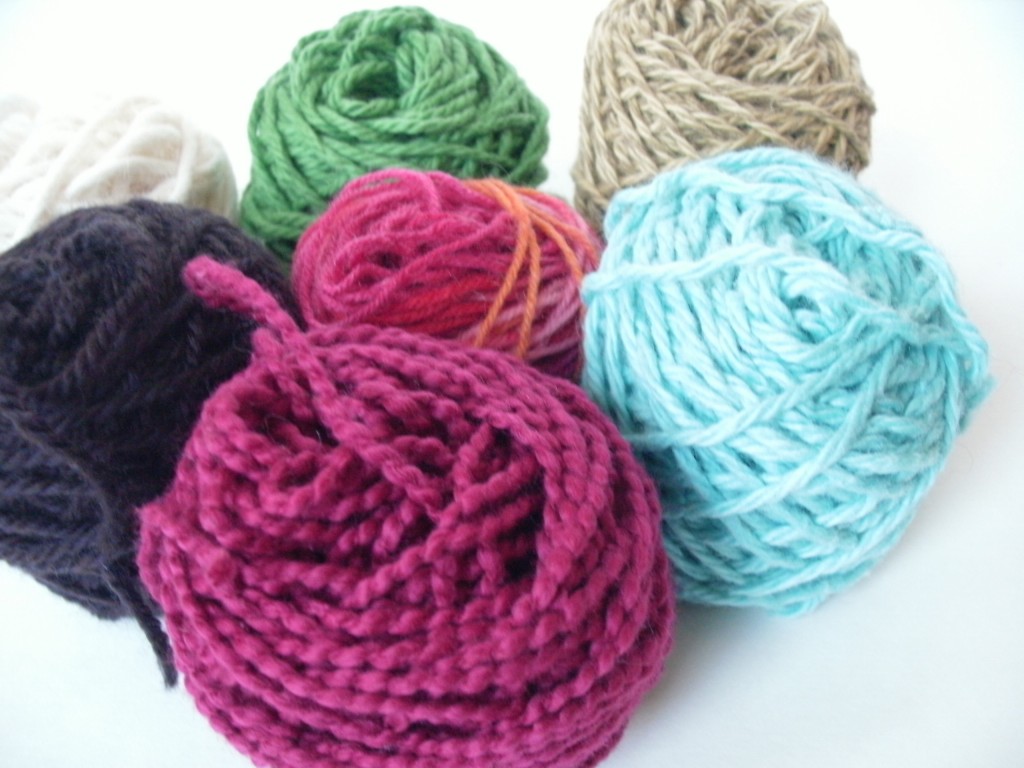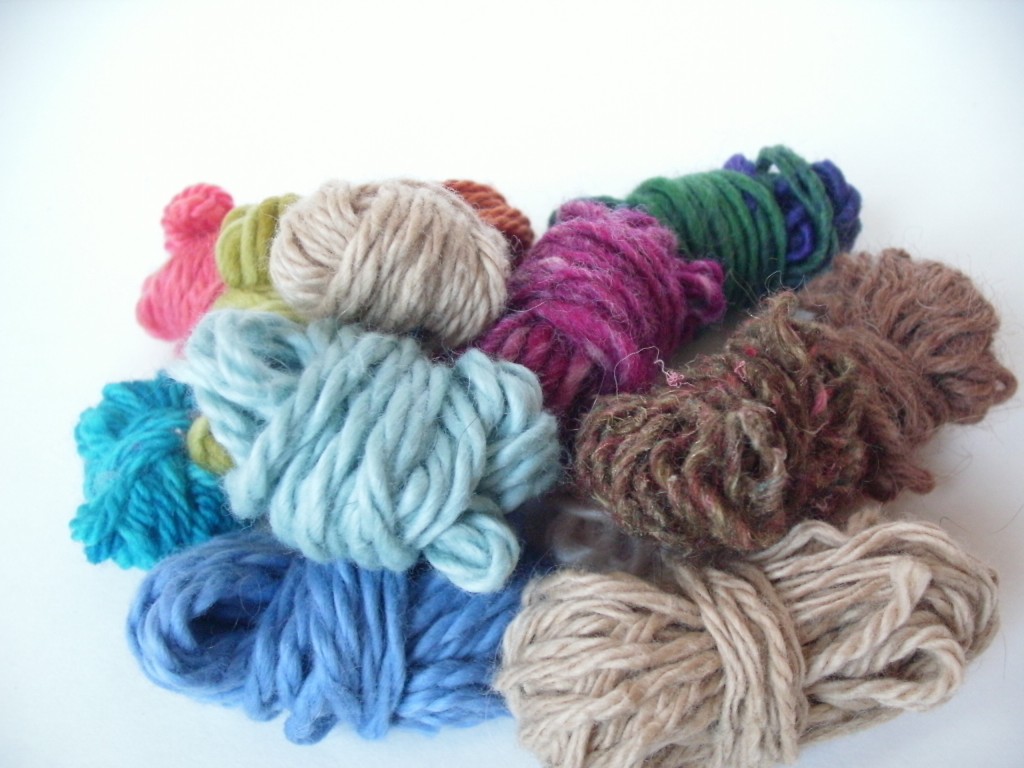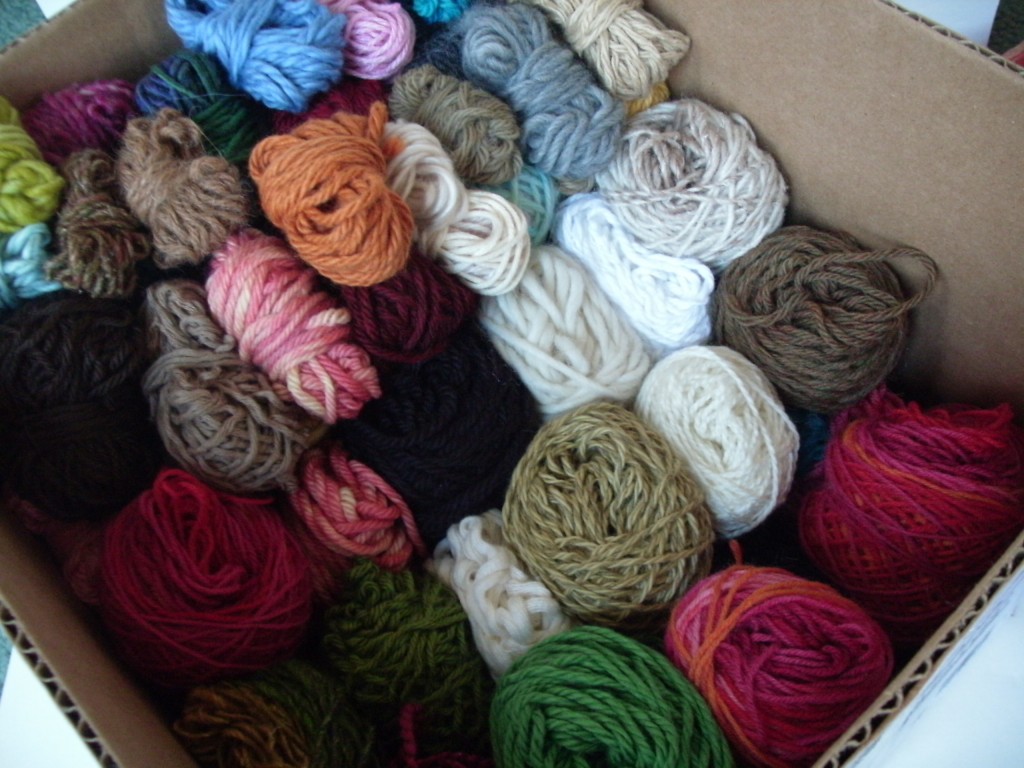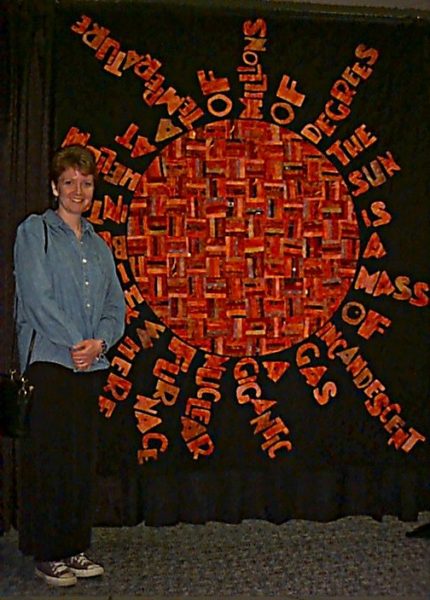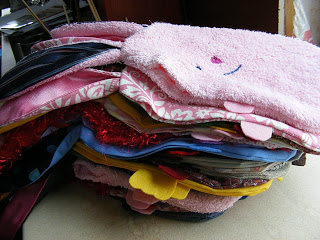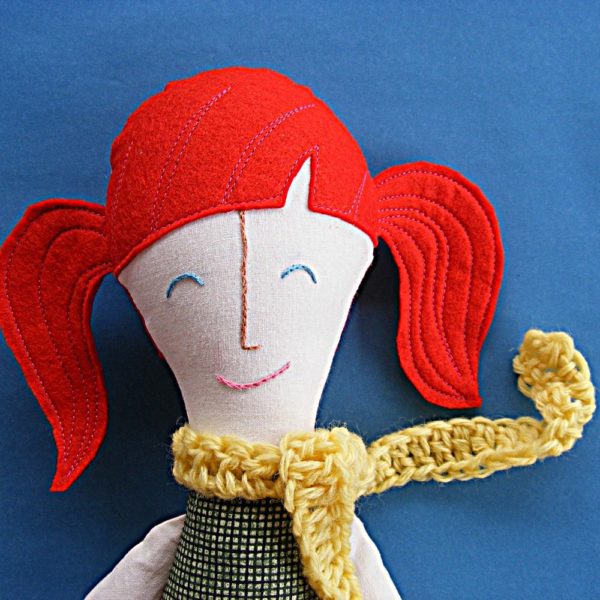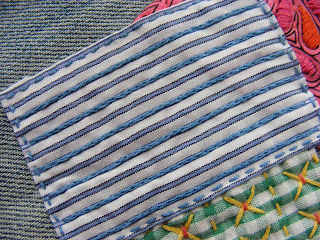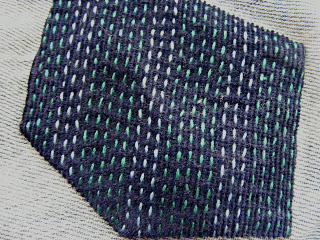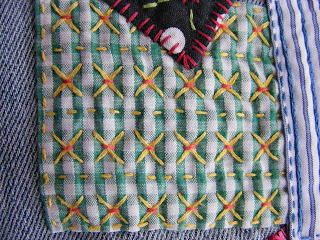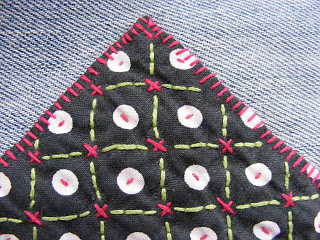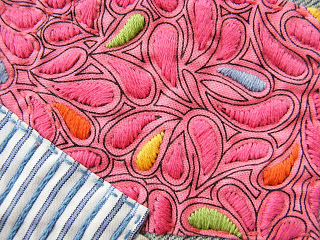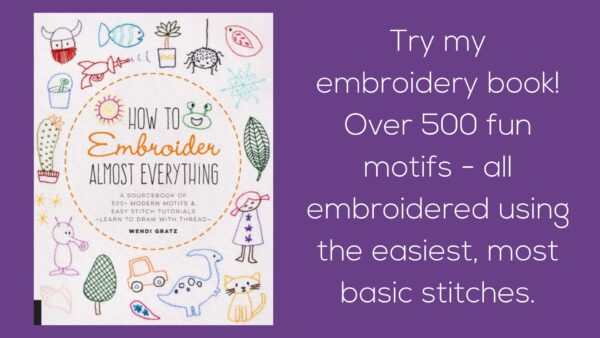What do you do with a Saturday in the middle of tomato season? Can some tomato sauce!
For today’s Craft School Saturday, I’ll show you my latest adventures in canning… yielding 7 quarts of yummy pasta sauce!
The old-school way of making sauce
Every year, I can tomato sauce (which, despite being called ‘canning’, it usually means putting stuff into glass jars). Since no one in my family cans, I learned everything I know about canning from the Ball Company’s Blue Book Guide to Preserving. (Although, I’m very happy to report that I’ve since taught my mom!)
This year’s innovation
You may recall that earlier this year, I was on the local news modeling for the book Craft Activism. Also on the show was the chef from an Italian restaurant. One of the perks of following a cooking segment is that you get to eat the food cooked during the show!
The chef told me that they make all of the sauce for their restaurant. I asked if he had any tips for speedy-sauce making, and he told me that they use a food mill. I had never heard of such a thing… but it’s changed my sauce-making life!
Food mills magically remove the skin and peels from the tomatoes, and leave behind a nice, smooth sauce. What an invention!
So this year… I got a food mill! What a great investment! It wasn’t very expensive and it really sped up the process!
Making the sauce
Warning: it’s messy… but pretty fun, too! My two bushels of tomatoes (about 50 lbs) made 7 quarts of sauce. This is less than my average crop, partially because I threw in some non-sauce tomatoes.
Step 1: get tomatoes
If you have a local farmer’s market, then that’s the place you’ll want to go to get your tomatoes. Ask if they have ‘seconds’, which is code for ‘tomatoes with a bump or bruise’. They’re too damaged to be sold at full price, but they’re great for sauce!
I bought 2 bushels. Ideally, you want ‘sauce’ tomatoes (a variety with more fleshy-bits on the inside), but some of the ones I got this year were heirlooms, and they worked just fine. Non-sauce varieties taste just as yummy, they just might need some extra boiling time (when making the sauce) because of their extra water content.
Step 2: Cut out icky parts and run through food mill
Cut out any severely bruised or moldy/icky parts of the tomato… you don’t want that in your sauce! Then, cut the tomatoes into quarters (or whatever size you need to so that they fit through your mill), and start cranking!
Oh yeah… and set up the food mill according to the instructions on the box… but you probably knew to do that!
Look at me go!
The food mill pours yummy sauce down one chute, and all the seeds and skin comes out another:
Man… this was WAY faster than blanching and peeling the skins!
Step 3: make sauce
So, the next thing you do is take all that sauce that’s been pouring out of the sauce chute and put it in a pot on your stove… or, if you have as many tomatoes as me, a few pots:
Add in whatever you think would be yummy. I added (pre-sauteed) garlic and onions, plus some basil, oregano and salt.
Then, just keep cooking until it’s the consistency of sauce you buy in the store!
Step 4: put sauce into cans and process
Once you have your sauce, it’s time to can it! Basically, you pour the hot sauce into the jars (leaving a little room at the top), put the lid on, and then dunk the jar in boiling water for 15 minutes. (If you’re a newbie to canning, definitely read up on detailed instructions!)
Step 5: stare proudly at your sauce!
There’s nothing I love more than looking at my beautiful jars of sauce, all lined up and waiting for winter!
Aren’t they pretty?
Step 5: Hire a clean-up crew
Just kidding! Well… sorta. Your kitchen, if you’re at all like me, probably looks like a disaster zone by the end:
I’m not gonna lie… you’re going to have to break out your elbow grease. I recommend baking soda: cleans wonders! And really, isn’t it all worth it to have that beautiful sauce?
Have a happy Labor Day Weekend!
I hope you’ve enjoyed this peek into my sauce-making adventures, and that you have a fabulous weekend!






